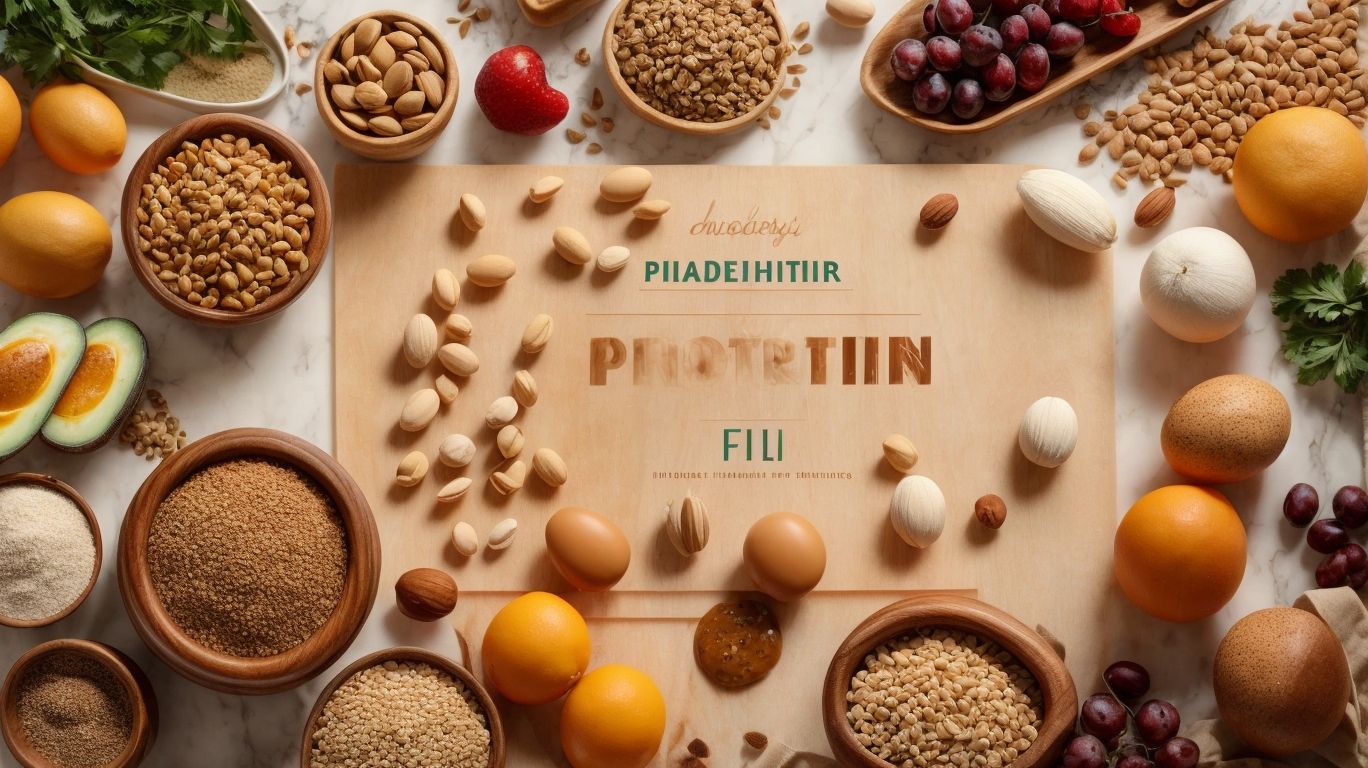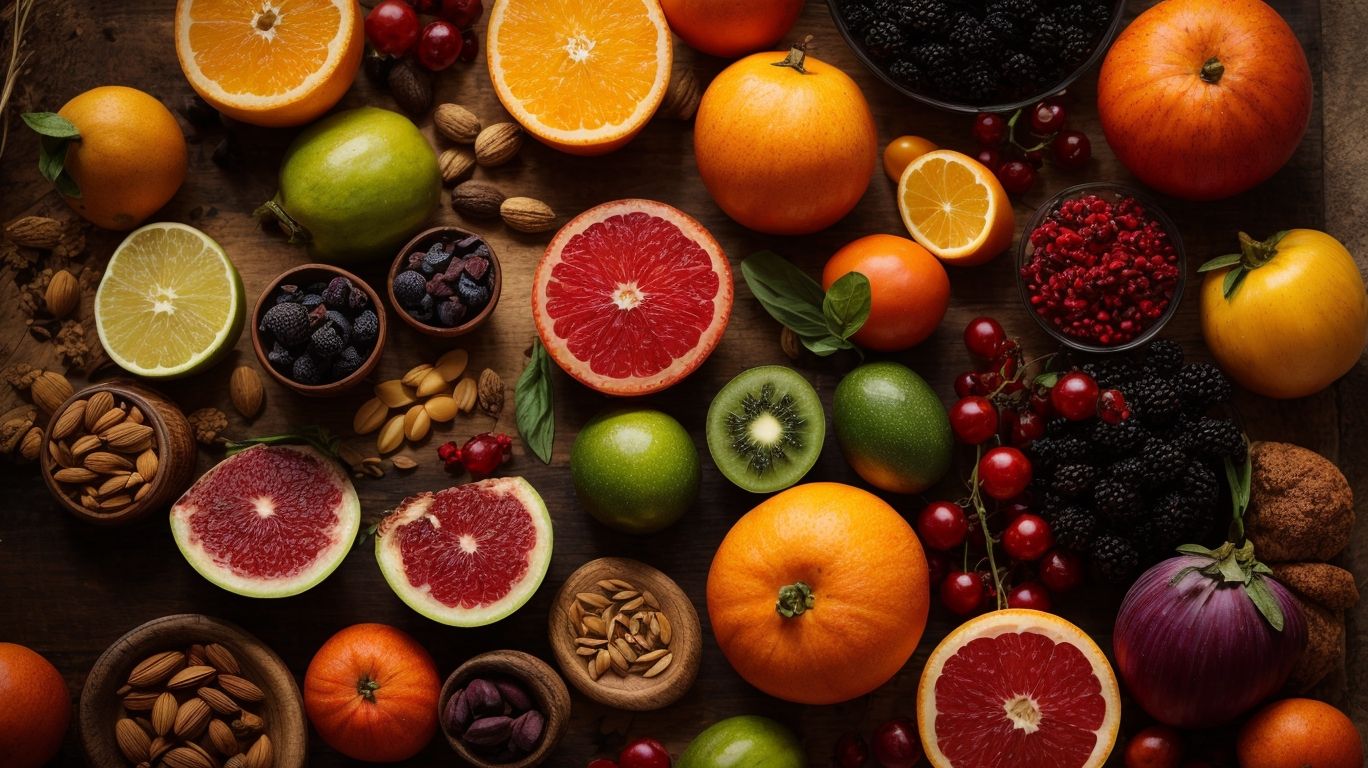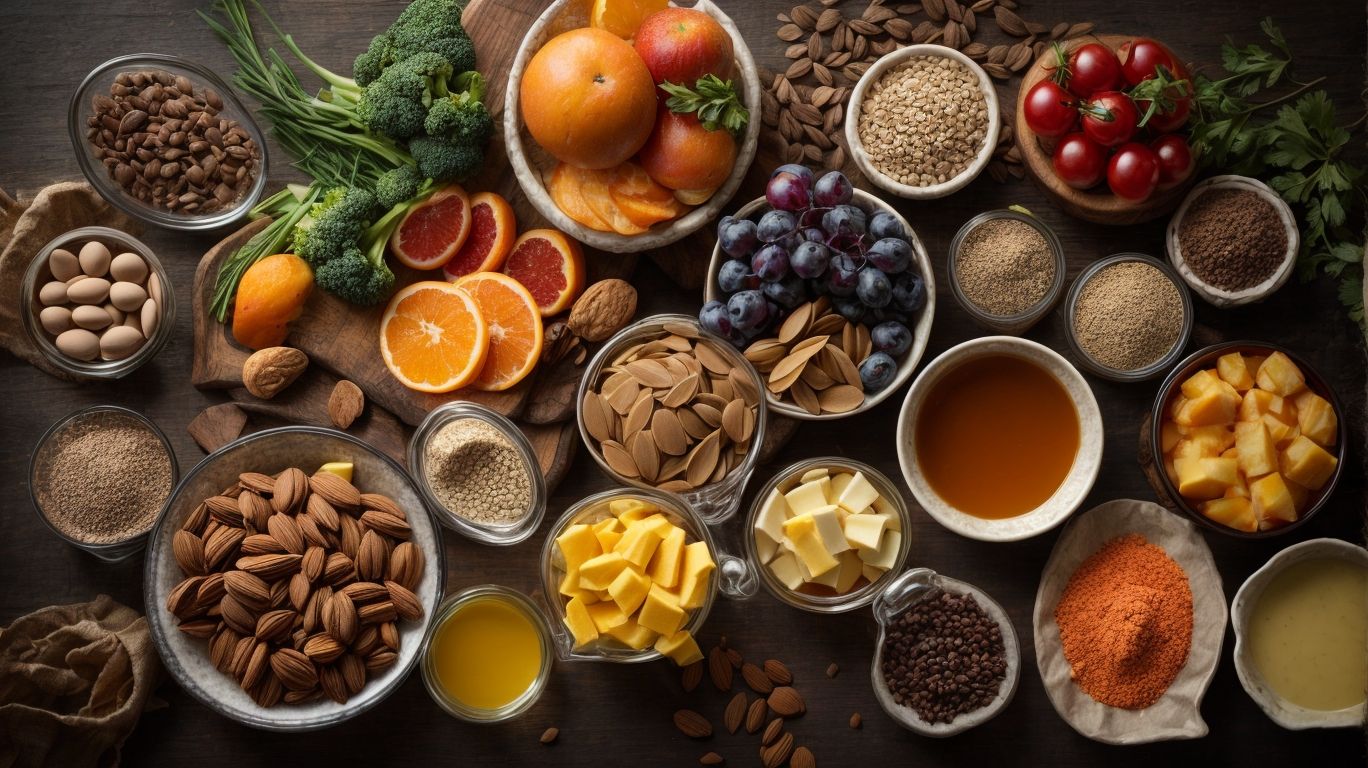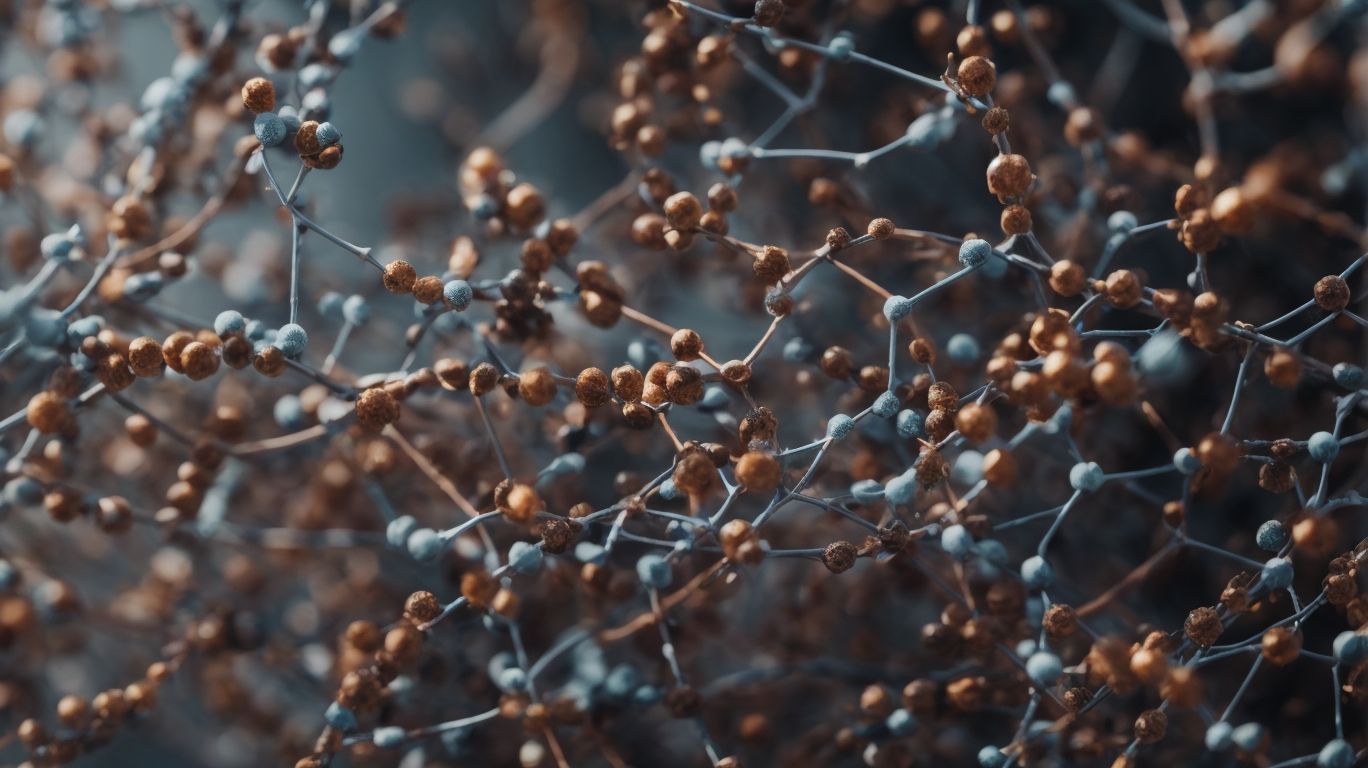Phenylalanine is a naturally occurring amino acid found in protein-rich foods. It is an essential nutrient for the body and plays a vital role in various bodily functions. In this comprehensive guide, we will explore the different types of phenylalanine, its functions in the body, and its health effects.
Phenylalanine exists in three forms: L-phenylalanine, D-phenylalanine, and DL-phenylalanine. While L-phenylalanine is an essential amino acid that cannot be produced by the body, D-phenylalanine and DL-phenylalanine are synthetically produced.
The primary function of phenylalanine is its role as a building block for proteins, which are vital for growth and repair of tissues in the body. Additionally, phenylalanine serves as a precursor for neurotransmitters, such as dopamine, norepinephrine, and epinephrine, which are essential for proper brain function. It also plays a role in hormone production.
Consuming phenylalanine has been linked to various health benefits, including improved mental health, pain relief, and weight loss. Studies have shown that phenylalanine supplements can improve symptoms of depression and ADHD. It has also been found to have analgesic properties, making it effective in managing chronic pain.
However, excessive consumption of phenylalanine can have adverse effects. Individuals with a condition called phenylketonuria (PKU) are unable to metabolize phenylalanine, which can lead to serious health complications. Moreover, consuming too much phenylalanine may also increase blood pressure and interact with certain medications.
Phenylalanine is found naturally in high-protein foods like meat, fish, and dairy products. It is also present in artificial sweeteners and processed foods. The recommended daily intake of phenylalanine is 25 milligrams per kilogram of body weight, and it is generally safe for most people to consume.
In conclusion, phenylalanine is an essential nutrient that plays a crucial role in various bodily functions. While it offers several health benefits, it is essential to consume it in moderation and be aware of potential risks and interactions. Consult with a healthcare professional before making any significant changes to your diet.
Key Takeaways:
What Is Phenylalanine?

Photo Credits: Chemicalglossary.Net by Zachary Thomas
Phenylalanine is a vital amino acid that plays a crucial role in the production of proteins and neurotransmitters. It can be found in a variety of protein-rich foods such as meat, fish, dairy, and eggs. In addition, it is a commonly used sweetener in diet products.
However, for those with the genetic disorder phenylketonuria (PKU), phenylalanine can be harmful and must be strictly avoided. It is important to fully understand the effects of phenylalanine on both overall health and the management of PKU.
Fun Fact: The discovery of phenylalanine dates back to 1879 when chemist Charles Moureu first identified it.
What Are the Different Types of Phenylalanine?

Photo Credits: Chemicalglossary.Net by Matthew Campbell
Phenylalanine is an essential amino acid that plays a crucial role in the production of proteins and neurotransmitters in the body. However, not all forms of phenylalanine are the same. In this section, we will delve into the three different types of phenylalanine: L-phenylalanine, D-phenylalanine, and DL-phenylalanine. By understanding the distinct characteristics and functions of each type, we can gain a deeper understanding of the overall health effects of phenylalanine.
1. L-Phenylalanine
L-Phenylalanine is an essential amino acid that plays a crucial role in various physiological functions.
- Step 1: Building block of proteins: L-Phenylalanine is necessary for the synthesis of proteins and is vital for the growth, repair, and maintenance of tissues in the body.
- Step 2: Precursor for neurotransmitters: L-Phenylalanine is converted into neurotransmitters like dopamine, norepinephrine, and epinephrine, which are essential for brain function and mood regulation.
- Step 3: Role in hormone production: L-Phenylalanine plays a role in the production of hormones such as thyroxine, which regulates metabolism, and melanin, which determines skin and hair color.
Consuming foods rich in L-Phenylalanine, such as meat, fish, dairy, and legumes, can help ensure an adequate intake of this essential amino acid. However, it is important to consult with a healthcare professional before taking L-Phenylalanine supplements or making significant changes to your diet.
2. D-Phenylalanine
D-Phenylalanine is one of the three forms of phenylalanine, along with L-Phenylalanine and DL-Phenylalanine. It is a man-made version of phenylalanine that is not naturally present in the body.
D-Phenylalanine is renowned for its analgesic properties and is often utilized as a natural pain reliever. Its mechanism of action involves inhibiting the enzymes responsible for breaking down endorphins, which are natural chemicals that help alleviate pain. This can effectively decrease pain levels and enhance overall mood.
D-Phenylalanine is commonly included in health supplements and is recognized for its potential in managing chronic pain and depression.
3. DL-Phenylalanine
DL-Phenylalanine is a combination of both L-Phenylalanine and D-Phenylalanine. This supplement is commonly used for its potential health benefits and has been found to have analgesic properties, making it useful for managing pain. Additionally, it is believed to aid in improving mood and mental focus by increasing levels of certain neurotransmitters in the brain. However, it is important to note that DL-Phenylalanine should be taken under the guidance of a healthcare professional, as it may interact with certain medications and may have potential side effects.
What Are the Functions of Phenylalanine?

Photo Credits: Chemicalglossary.Net by Mark Moore
Phenylalanine, an essential amino acid, plays a crucial role in various bodily functions. In this section, we will delve into the multifaceted functions of phenylalanine. From being a building block for proteins to serving as a precursor for neurotransmitters and hormones, this amino acid has a significant impact on our health. By understanding its functions, we can gain a better understanding of why phenylalanine is essential for our overall well-being.
1. Building Blocks of Proteins
Phenylalanine is one of the essential amino acids that serves as a building block for proteins. Here are the key steps in which phenylalanine contributes to the synthesis of proteins:
- Phenylalanine is absorbed into the bloodstream through the small intestine.
- It is then transported to cells and incorporated into the ribosomes, where proteins are assembled.
- Within the ribosomes, phenylalanine combines with other amino acids to form polypeptide chains, which eventually fold into functional proteins.
- These proteins serve various functions in the body, such as enzymes, hormones, and structural components of cells and tissues.
Pro-Tip: To optimize protein synthesis, make sure to maintain a balanced diet that includes adequate sources of phenylalanine, such as meat, fish, dairy products, legumes, and whole grains.
2. Precursor for Neurotransmitters
Phenylalanine serves as a crucial precursor for neurotransmitters in the body, including dopamine, norepinephrine, and epinephrine. These neurotransmitters play significant roles in regulating mood, emotions, and cognitive function. Phenylalanine is converted into tyrosine, which then gets converted into these neurotransmitters. Adequate phenylalanine intake is essential for maintaining optimal brain function. However, it is important to note that individual requirements may vary.
A pro-tip: To support the production of neurotransmitters, be sure to incorporate foods rich in phenylalanine such as lean meats, fish, eggs, dairy products, and legumes into your diet.
3. Role in Hormone Production
Phenylalanine plays a vital role in hormone production in the body. It is a key component in the synthesis of several important hormones that regulate various bodily functions. Here are the steps involved in the role of phenylalanine in hormone production:
- Phenylalanine is converted into tyrosine through the action of the enzyme phenylalanine hydroxylase.
- Tyrosine is then further converted into L-DOPA, a precursor to dopamine, norepinephrine, and epinephrine.
- Dopamine plays a crucial role in regulating mood, motivation, and pleasure.
- Norepinephrine is involved in the body’s stress response and helps regulate blood pressure and heart rate.
- Epinephrine, also known as adrenaline, is responsible for the “fight or flight” response and aids in increasing energy and focus.
Therefore, phenylalanine plays a critical role in hormone production, influencing various aspects of our physical and mental well-being.
What Are the Health Effects of Phenylalanine?

Photo Credits: Chemicalglossary.Net by Gary Nelson
Phenylalanine is an essential amino acid that plays a crucial role in many bodily functions. In this section, we will discuss the various health effects of phenylalanine, and how it can positively impact our overall well-being. From improving mental health to providing pain relief and aiding in weight loss, phenylalanine offers a range of potential benefits. Let’s dive deeper into each of these sub-sections to better understand the power of this essential amino acid.
1. Mental Health Benefits
Phenylalanine offers numerous benefits for mental health when consumed in appropriate amounts:
- Boosts mood: Phenylalanine is a precursor to dopamine and norepinephrine, neurotransmitters associated with regulating mood.
- Improves focus and concentration: By increasing dopamine levels, phenylalanine can enhance cognitive function and attention span.
- Supports memory: Phenylalanine plays a role in the production of key neurotransmitters that are essential for memory formation and retrieval.
2. Pain Relief
Phenylalanine has been studied for its potential role in pain relief. Here are some steps to consider when using phenylalanine for pain relief:
- Consult a healthcare professional: It is important to discuss the use of phenylalanine for pain relief with a healthcare professional before starting any supplementation.
- Consider DL-Phenylalanine: DL-Phenylalanine is a combination of the D and L forms of phenylalanine and is often used for pain relief.
- Start with a low dosage: Begin with a low dosage and gradually increase it if needed, under the guidance of a healthcare professional.
- Monitor for side effects: Keep track of any side effects that may occur and report them to a healthcare professional.
- Combine with other pain management strategies: Phenylalanine can be used alongside other pain management strategies, such as physical therapy or medication, for enhanced relief.
3. Weight Loss Aid
Phenylalanine can potentially act as a weight loss aid by affecting appetite and metabolism. Here are some steps to incorporate phenylalanine into your weight loss plan:
- Consult a healthcare professional: Before making any changes to your diet, it is important to consult with a healthcare professional to ensure it is safe for you.
- Incorporate foods high in phenylalanine: Include lean meats, dairy products, soybeans, and eggs, which are all rich in phenylalanine, into your diet.
- Control portion sizes: Be mindful of portion sizes to avoid consuming excessive calories.
- Maintain a balanced diet: Along with phenylalanine-rich foods, make sure to consume a well-balanced diet that includes fruits, vegetables, whole grains, and healthy fats.
- Incorporate exercise: Regular physical activity is crucial for weight loss. Combine phenylalanine intake with a consistent exercise routine.
- Track progress: Monitor your weight loss progress to assess the effectiveness of incorporating phenylalanine as a weight loss aid.
What Are the Risks of Consuming Too Much Phenylalanine?

Photo Credits: Chemicalglossary.Net by Tyler Mitchell
As with any substance, consuming too much phenylalanine can have negative effects on the body. In this section, we will discuss the potential risks associated with consuming excessive amounts of phenylalanine. We will cover the genetic disorder phenylketonuria, which affects the body’s ability to metabolize phenylalanine, as well as the potential for increased blood pressure and interference with certain medications. It is important to understand these risks in order to make informed decisions about your phenylalanine intake.
1. Phenylketonuria
Phenylketonuria (PKU) is a genetic disorder that affects the body’s ability to break down the amino acid phenylalanine. This can result in a buildup of phenylalanine in the blood, which can cause intellectual disabilities and other health problems if not properly managed. The management of PKU involves following a strict low-protein diet to limit phenylalanine intake. Here are some steps to help manage PKU:
- Regularly monitor blood phenylalanine levels.
- Follow a low-protein diet, avoiding foods high in phenylalanine such as meat, fish, dairy, and certain grains.
- Consume specialized medical foods and formulas that are low in phenylalanine.
- Work with a registered dietitian to ensure nutritional needs are met.
- Take prescribed supplements to meet vitamin and mineral requirements.
If you or a loved one has PKU, it is crucial to work closely with a healthcare team to develop an individualized treatment plan. Together, you can effectively manage PKU and maintain a healthy lifestyle.
2. Potential for Increased Blood Pressure
Increased blood pressure is a potential risk associated with consuming excessive amounts of phenylalanine. To manage this risk, follow these steps:
- Monitor intake: Be aware of the amount of phenylalanine in your diet and keep track of your daily consumption.
- Balance diet: Maintain a well-balanced diet that includes a variety of other amino acids to prevent an imbalance.
- Consult a healthcare professional: If you have a pre-existing condition or are concerned about the potential for increased blood pressure due to phenylalanine consumption, seek guidance from a healthcare professional.
- Consider alternatives: If you are at a higher risk for increased blood pressure, you may want to explore low-phenylalanine food options or make dietary modifications.
- Personalize intake: Adjust your phenylalanine intake based on your individual health needs and any specific recommendations from your healthcare provider.
3. Interference with Certain Medications
Interference with certain medications is a potential risk associated with consuming excessive amounts of phenylalanine. To avoid this, follow these steps:
- Consult a healthcare professional before taking phenylalanine supplements if you are currently on any medications.
- Inform your healthcare provider about any over-the-counter medications or herbal supplements you are taking.
- Be cautious if you are taking medications for conditions like Parkinson’s disease, depression, or high blood pressure, as phenylalanine may interfere with their effectiveness.
Pro-tip: Always prioritize open communication with your healthcare provider to ensure safe and effective medication management.
What Foods Contain Phenylalanine?

Photo Credits: Chemicalglossary.Net by Scott Williams
A key amino acid in our diets, phenylalanine plays a crucial role in many bodily functions. However, too much or too little of this amino acid can have serious health consequences. In this section, we will take a closer look at the different food sources of phenylalanine. From high-protein foods to artificial sweeteners and processed foods, we will explore the various ways in which phenylalanine can be consumed and how it can affect our overall health.
1. High-Protein Foods
High-protein foods have been consumed throughout history, playing a vital role in human nutrition and development. Ancient civilizations relied on protein-rich sources like meat, fish, and legumes to sustain their energy and support their physical activities. Today, incorporating high-protein foods into your diet is easier than ever. Consider the following steps to ensure you are getting enough phenylalanine, a crucial amino acid found in protein sources:
- Include lean meats like chicken, turkey, and beef in your meals.
- Opt for seafood such as salmon, tuna, and shrimp.
- Include dairy products like milk, cheese, and yogurt.
- Add plant-based protein sources like tofu, lentils, and chickpeas.
- Incorporate eggs and egg whites into your diet.
- Include protein-rich nuts and seeds like almonds, peanuts, and chia seeds.
- Consider protein supplements like whey protein powder or protein bars.
2. Artificial Sweeteners
Artificial sweeteners, also known as sugar substitutes, are commonly used in various food and beverage products. They are used to provide sweetness without the added calories of sugar. Some popular artificial sweeteners include aspartame, sucralose, and saccharin, and they can be found in diet sodas, sugar-free desserts, and other low-calorie products.
While they offer a way to enjoy sweet tastes without the guilt, it’s important to keep in mind that consuming excessive amounts of artificial sweeteners may pose potential health risks and side effects. It’s always recommended to consume them in moderation and consult with a healthcare professional if you have any concerns.
3. Processed Foods
Processed foods are a common source of phenylalanine in our diets. Here are some steps to consider when it comes to processed foods and their phenylalanine content:
- Read labels: Look for processed foods that specifically mention phenylalanine or artificial sweeteners in their ingredient list.
- Avoid certain products: Processed foods like diet sodas, sugar-free candies, and protein bars often contain high levels of phenylalanine.
- Choose natural alternatives: Opt for whole, unprocessed foods like fresh fruits and vegetables, lean meats, and whole grains to reduce phenylalanine intake.
- Be aware of hidden sources: Some processed foods may not advertise phenylalanine on their labels, so it’s important to be aware of potential sources like certain condiments or flavor enhancers.
How Much Phenylalanine Should Be Consumed?

Photo Credits: Chemicalglossary.Net by George Wright
When it comes to consuming phenylalanine, it’s important to be mindful of the recommended intake for optimal health. Here are some steps to consider:
- Consult a healthcare professional or nutritionist to determine your individual needs.
- Consider your current health status and any specific conditions you may have.
- Follow the guidelines provided by relevant health organizations and regulatory bodies.
- Read food labels carefully to determine the phenylalanine content in processed foods and beverages.
- Avoid exceeding the recommended daily intake to prevent potential health risks.
Remember, everyone’s dietary requirements differ, so it’s essential to seek personalized advice. Consulting professionals and staying informed will help you make informed choices and maintain a balanced diet.
Please note that the information provided here is for educational purposes only. For personalized recommendations, consult a healthcare professional.
Frequently Asked Questions
What is the significance of pre-exercise supplementation of Phenylalanine?
The study showed that pre-exercise ingestion of Phenylalanine may stimulate whole body fat oxidation, making it an important strategy for increasing energy expenditure.
What is the recommended exercise prescription for obese individuals?
The American College of Sports Medicine suggests 45-60 minutes of exercise for obese people in order to prevent obesity and maintain a healthy weight.
How was the study on Phenylalanine and exercise-induced fat oxidation conducted?
The study was conducted as a double-blind, placebo-controlled crossover trial in which six healthy, active male volunteers were randomly assigned to ingest either Phenylalanine or a placebo. They then performed workload trials on a cycle ergometer for 1 hour at 50% of maximal oxygen consumption.
What were the main findings of the study?
The results showed that oral intake of Phenylalanine caused a significant increase in plasma glycerol and glucagon levels during exercise, and a decrease in respiratory exchange ratio, indicating a shift towards fat oxidation.
How can I access the data used in the study?
The datasets used and/or analyzed during the study are available from the corresponding author upon reasonable request. The study was also retrospectively registered on May 26, 2017 with UMIN000027502.
What is Mayo Clinic’s use of email and website usage information for?
Mayo Clinic collects and combines email and website usage information with other data to provide relevant and helpful information to users, including the latest Mayo Clinic health information and expertise on managing health. By signing up for Mayo Clinic’s email newsletter, you will have access to these resources.
